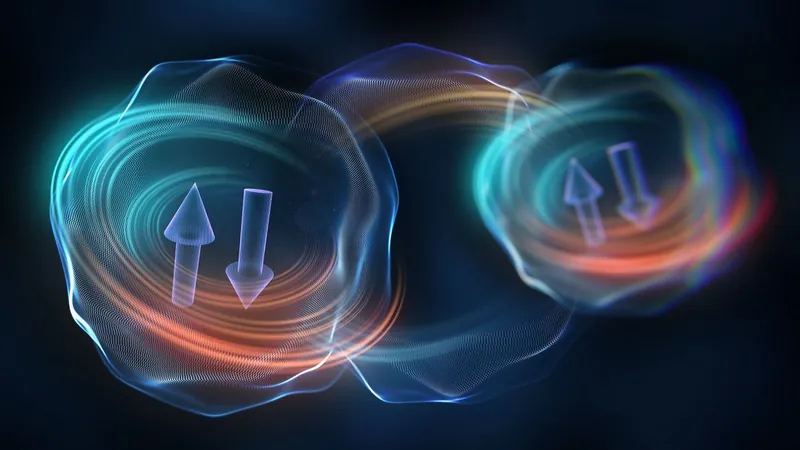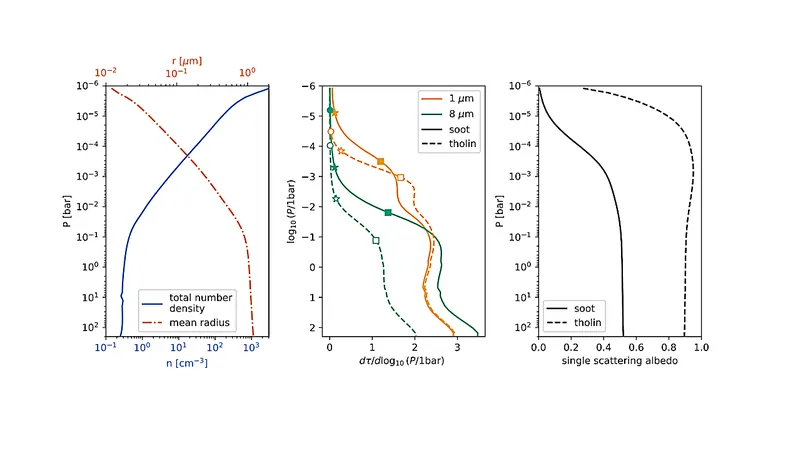
Revolutionary Discovery: 'Half Ice, Half Fire' State of Matter Poised to Transform Quantum Computing!
2025-04-01
Author: Jia
In a groundbreaking revelation, physicists have unveiled a new state of matter referred to as "half ice, half fire," potentially revolutionizing advancements in quantum computing and other technological fields. This fascinating phase consists of an intriguing balance between "up" spins and "down" spins of electrons, representing ordered and disordered states respectively—hence its fiery and icy moniker.
The Genesis of a New Era in Material Sciences
The distinctive characteristics of "half ice, half fire" arise from its capacity to switch sharply between different phases at reasonable temperatures, signifying a remarkable achievement in the study of matter phases. This discovery is a counterpart to the previously noted "half fire, half ice" state, first identified by researchers at Brookhaven National Laboratory in 2016, led by physicists Weiguo Yin and Alexei Tsvelik, alongside intern Christopher Roth.
Researchers stress that understanding the mechanics behind these states can answer vital questions in physics and materials science. "Finally solving these challenges could pave the way for significant breakthroughs in quantum computing and spintronics, making it possible to manipulate the transition between diverse matter states with exotic properties," said Yin in a statement.
Unlocking Hidden Potential
The discovery of "half ice, half fire" stemmed from investigations into ferrimagnetic materials—specifically, the compound Sr3CuIrO6, which is comprised of strontium, copper, iridium, and oxygen. In this ferrimagnet, atoms possess opposing magnetic qualities. However, due to an imbalance in their population, there remains some residual magnetization, which allowed the team to observe this novel state.
Interestingly enough, the researchers induced the original "half fire, half ice" phase through the application of an external magnetic field, leading to unique properties in copper and iridium sites. Hot spins exhibited smaller magnetic movements on copper while cold spins displayed larger movements on iridium, establishing a distinctive magnetization pattern.
Yet, despite the excitement surrounding the initial find, Tsvelik acknowledged it merely scratched the surface. “We were still piecing together how this unique state could be harnessed,” he admitted.
The latest study spearheaded by Yin brings fresh insights into what might have initially seemed like a puzzle missing key pieces. The researchers discovered a narrow temperature range that enables a remarkable swap between hot and cold spins, unlocking untapped potential. This ultra-sharp phase switching presents promising prospects not just theoretically but also in practical applications.
Imagine the possibilities! This type of rapid phase transition could pioneer a new era of refrigeration technology, potentially leading to energy-efficient cooling systems. Moreover, these fascinating states of matter may provide novel methods for quantum information storage, functioning as bits that can potentially revolutionize data management.
As Yin aptly noted, “The door to new possibilities is now wide open.” The implications of this discovery could redefine our understanding of matter and the universe itself, heralding exciting new avenues in both scientific research and practical applications.
Stay tuned as scientists continue to explore this thrilling frontier of physics and engineering—who knows what other stunning revelations await?


 Brasil (PT)
Brasil (PT)
 Canada (EN)
Canada (EN)
 Chile (ES)
Chile (ES)
 Česko (CS)
Česko (CS)
 대한민국 (KO)
대한민국 (KO)
 España (ES)
España (ES)
 France (FR)
France (FR)
 Hong Kong (EN)
Hong Kong (EN)
 Italia (IT)
Italia (IT)
 日本 (JA)
日本 (JA)
 Magyarország (HU)
Magyarország (HU)
 Norge (NO)
Norge (NO)
 Polska (PL)
Polska (PL)
 Schweiz (DE)
Schweiz (DE)
 Singapore (EN)
Singapore (EN)
 Sverige (SV)
Sverige (SV)
 Suomi (FI)
Suomi (FI)
 Türkiye (TR)
Türkiye (TR)
 الإمارات العربية المتحدة (AR)
الإمارات العربية المتحدة (AR)